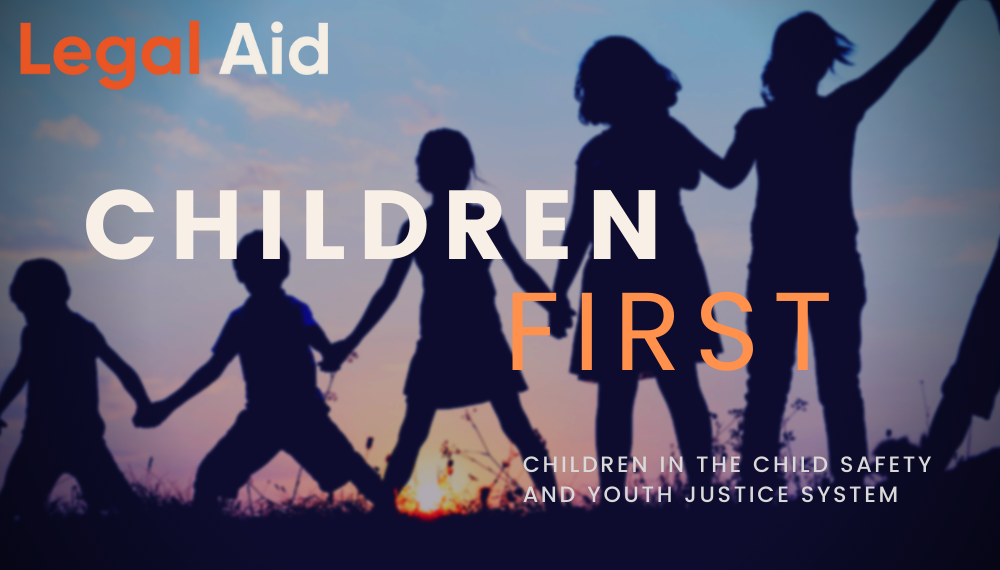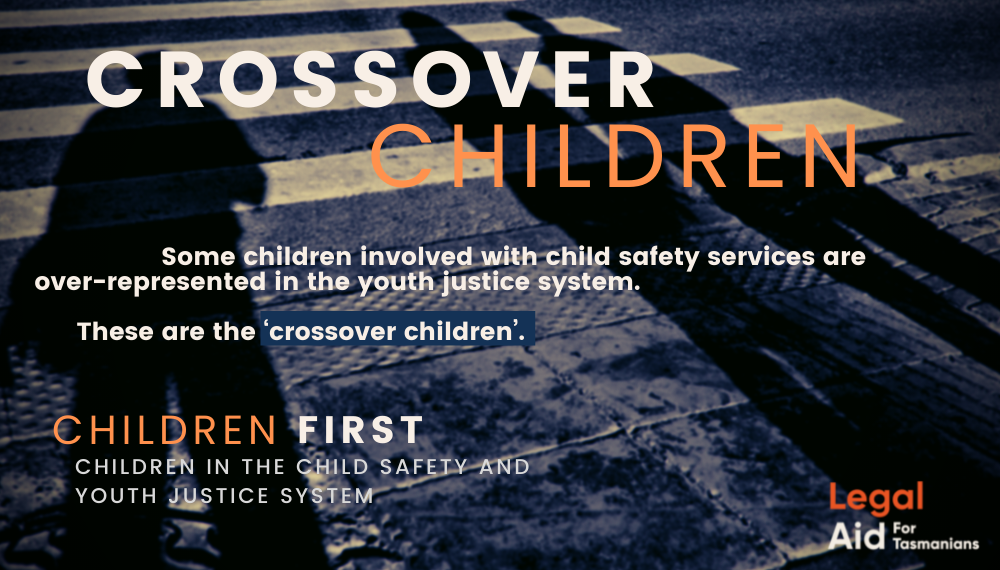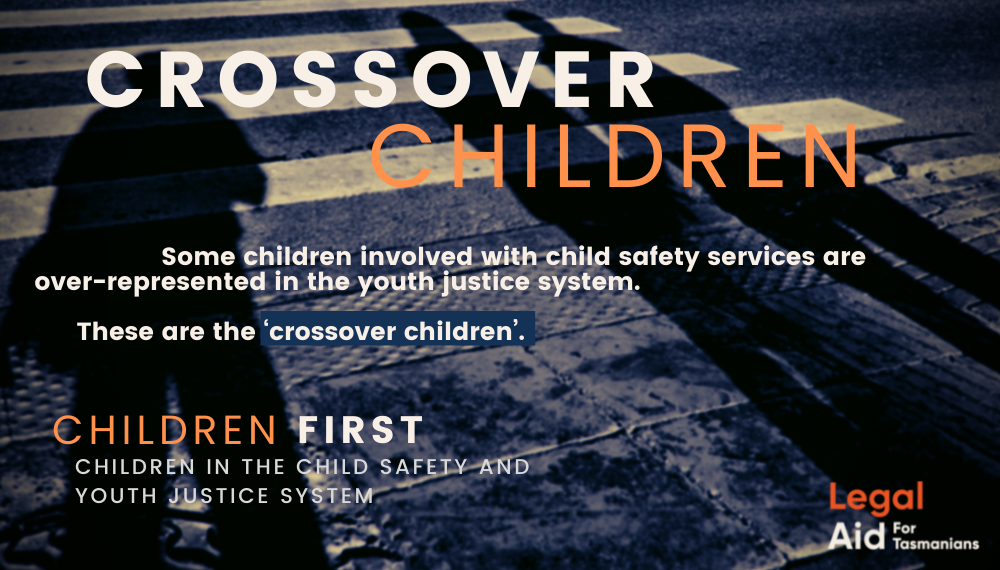We need to see them as 'Children First': Children in the Child Safety and Youth Justice System

Most children don’t get caught up in the youth justice system. If they do their involvement is often limited.
But some children have longer and more involvement in the youth justice system than their peers.
About one in 10 children with a child safety file also have a youth justice file. These are the “crossover children”.
Download the report - Children First: Children in the Child Safety and Youth Justice System
Download the Crossover Children infographic
Tasmania Legal Aid Director Vincenzo Caltabiano said the youth justice system has an overrepresentation of crossover children – kids involved in both the child safety and the youth justice systems.
“The earlier children are involved in the system the more entrenched they become. Crossover children are over-represented in this group, particularly girls and Aboriginal and Torres Strait Islander children,” Mr Caltabiano said.
“Our data shows that crossover children had almost twice as many files as other children in the youth justice system. Crossover children made up 41% of children under 14 charged with offending, and accounted for 46% of files for this group.
“While around 10% of the Tasmanian children identify as Aboriginal or Torres Strait Islander, 12% of all TLA youth justice clients and 15% of crossover children identify as Aboriginal or Torres Strait Islander.”
Mr Caltabiano said almost half the Aboriginal children under 14 when first charged with a criminal offence were crossover children.
“While 25% of all TLA youth justice clients were female, this jumps to 37% of crossover children. Over half of the girls under 14 (52%) when first charged were crossover children (compared with 38% of boys under 14) and accounted for 59% of youth justice files for girls under 14.”
The launch in Hobart on Thursday was attended by Commissioner for Children and Young People Leanne McLean and Tasmania Aboriginal Legal Services Board member Rodney Dillon.

The Children First report has made six recommendations:
1. Raising the minimum age of criminal responsibility to 14 years
This would bring Tasmania into line with 86 other countries. The ACT has committed to raising the age to 14 years. While the total number of children under 14 who are charged is small, this change would have a significant overall long term benefit. The focus should be on putting appropriate supports in place to address underlying issues affecting these children.
2. Increased diversion options
While many children are successfully diverted from the justice system there needs to be more options available to police and Courts.
3. Police as a last option for children in out of home care
Children in out of home care are entitled to be treated as a child would be treated by their parents. Issues that arise in the home are usually addressed by parents without calling the police. There is a need for clearer processes for dealing with issues so that police are only involved as a last resort.
4. Adopting a trauma informed approach to reduce involvement in the criminal justice system
The law needs to acknowledge the impact of trauma for many young people who become involved in the youth justice system, particularly crossover children. Legislative recognition of this would focus the response on addressing the challenges faced by the child.
5. Bail support
Bail laws need to more clearly recognise the circumstances of children. This must be underpinned by greater bail support.
6. Establish a lawyer in school program
School lawyer programs are an effective early intervention to support children dealing with a range of issues including family violence and involvement in the justice system.
Mr Caltabiano said the Children First report was produced by examining TLA records from 2007-20.
“Legal representation is the most intense and costly service provided. Most legal representation is for criminal, family law and child safety cases,” he said.
“TLA is the primary provider of legal services for Tasmanian children. We represent children charged with criminal offences, as well as representing the interests of children in Child Safety and Family Law cases. This experience provides a unique insight into the interaction of children with the justice system.”
Mr Caltabiano said crossover children first charged when under 14 had an average of 6 files each, compared with 3 files for under 14-year-olds without a child safety background.
“Girls who crossover had an average of three files compared with two files for other girls. The most common primary offence for children under 14 when first charged was stealing,” the TLA director said.
“Only about 10% of children with a child safety file also had a youth justice file, that is, crossover children. Two thirds of crossover children first had involvement with child safety and then with youth justice.
“Crossover children made up 15% of children with a youth justice children and accounted for 24% of all TLA youth justice files.”
Media contact: A.Mark Thomas, M&M Communications, 0422 006 732

